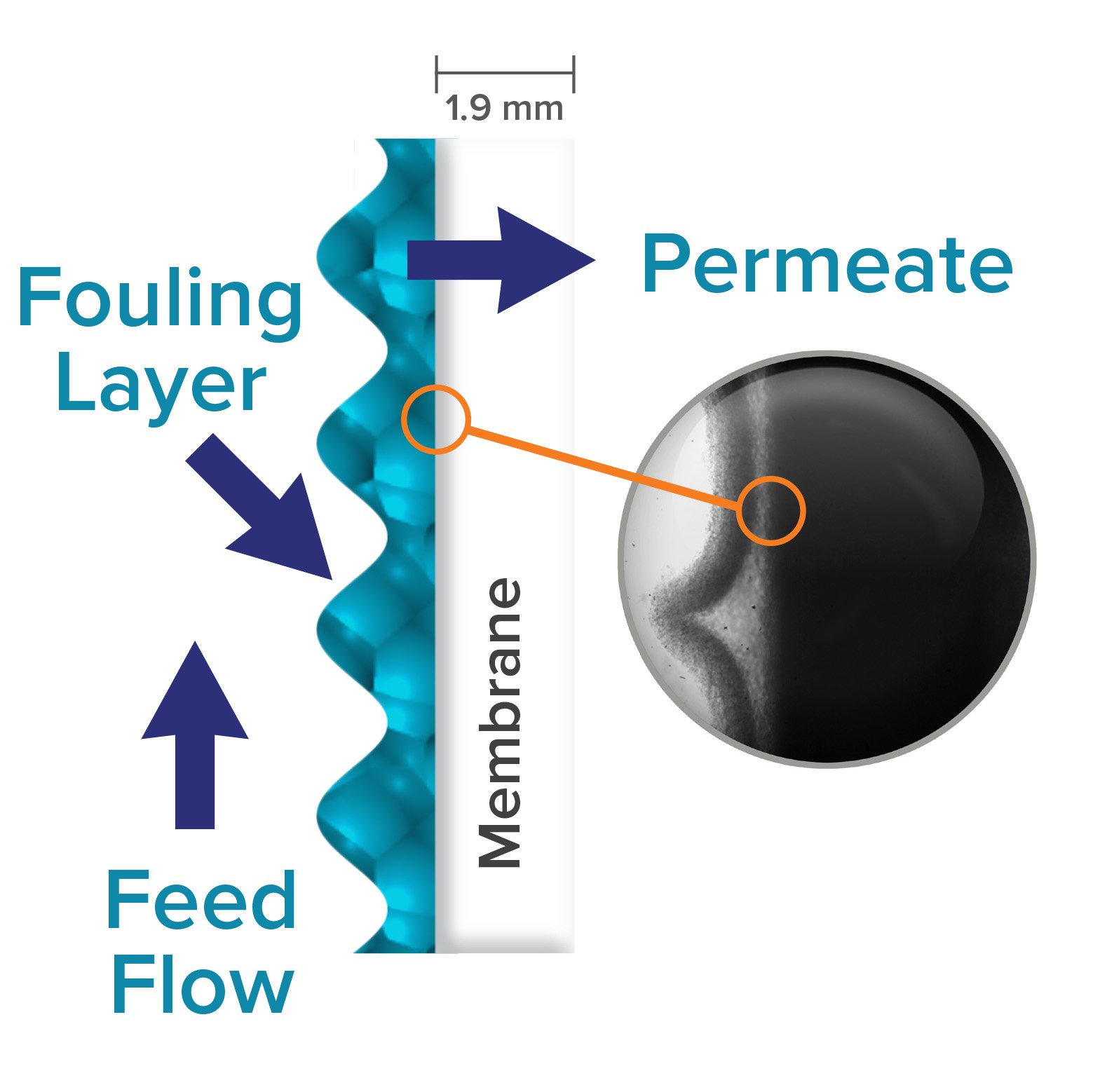
Membrane fouling, defined as the accumulation of particles and organic matter at the surface or in the pores of membranes occurs during membrane filtration. Membrane fouling results in membrane performance loss, i.e. lower rejection values, lower permeate flux and higher pressure drop, which translates into higher operational cost. The extent of fouling depends on the feed quality, operating conditions, membrane characteristics and module design.
Membrane fouling can be divided into three types: hydraulically reversible, chemically reversible and irreversible fouling. Hydraulically reversible fouling can be removed physically (e.g. by introducing turbulence at the proximity of a membrane surface) or through backwashing of membranes. On the other hand, chemically reversible fouling can only be removed by chemical cleaning methods, while irreversible fouling is permanent.
Typically chemical cleaning is performed when fouling cannot be physically removed. Chemical cleaning of the membrane will remove the foulants from the membrane surface and restore the membrane performance. Although different membrane manufacturers have varying guidelines and recommendations for the frequency of chemical cleaning, as a good rule of thumb chemical cleaning is done when:
- Normalized permeate flow drops about 10-15%
- Normalized permeate quality decreases by 10-15%
- Normalized pressure drop increases 10-15%
Choosing the right cleaning chemicals and respective concentration depends on the nature and intensity of fouling, and their chemical compatibility with the membrane and the wetted materials in the membrane unit. The cleaning procedure, commonly referred to cleaning in place (CIP) will vary with frequency, operating pressure, flow, temperature, and pH, and is generally a function of the fouling type and intensity, as well as the membrane module design.
While some membrane manufacturers offer proprietary chemicals and cleaning procedures, general guidelines for membrane cleaning in place (CIP) include:
- Cleaning Chemicals: For organic fouling: NaOH 0.05-0.1%
- For inorganic and colloidal fouling: Strong acids (H2SO4,H3PO4, HCl, Citric Acid) 0.1-0.2%
- Cleaning Pressure: 15-75 psi (1-5 bar)
- pH Range:Cellulose Acetate (CA): 3-8
- Polysulfone (PS): 2-11.5
- Polyamide (PA) 2-11.5
- Temperature: Cleaning procedure is more effective at elevated temperatures: e.g. 35-50°C
- Circulation Time: Most cleaning chemicals should be circulated for 10 - 30 minutes, followed by a 10 - 30 minute soaking period and then a final 10 minute recirculation prior to flushing. For high fouling intensities, up to a 3 hour circulation may be required.
- Circulation Rate: Chemical cleaning is more effective at higher flow rates.
- Higher flow rates induce higher cross flow velocities and as a result higher shear at membrane surface which has been proved to be effective in fouling control
To learn more about the membrane cleaning procedures, please contact one of our Membrane Process Development Specialist at [email protected].


![Join Sterlitech at BIO 2024 [Booth #5558]: Exploring the Future of Biotechnology](https://www.sterlitech.com/media/magefan_blog/b4.jpeg)

